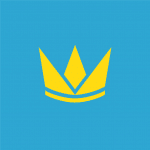Operators have had to deal with border closures at short notice, changing guidance on airport and inflight social distancing measures, mask wearing and contactless journey guidance. Help is at hand from Web Manuals.
According to document management provider Web Manuals, the past 12 months have seen a fast pace of regulation updates and changes, all of which needed to be monitored, recorded, implemented and distributed across business aviation organisations. COVID-19 has played a large role in this; ensuring safe travel for those who need it has been paramount and protocols have needed to be put in place.
“In business aviation, operators have had to deal with border closures at short notice, changing guidance on airport and inflight social distancing measures, mask wearing, contactless journey guidance and vaccine or negative COVID test requirements for entering different countries. This has meant that regulatory documentation has needed to be regularly updated and shared across an entire organisation quickly to remain consistently compliant,” comments chief revenue officer Paul Sandström.
Operators flying in and out of the UK have also had to manage the changing paperwork requirements as a result of Brexit. Since December 31 2020, the UK has no longer applied the EU’s regulatory framework for aviation safety and no longer takes part in EASA. Instead, a draft agreement has been created that defines new arrangements for the recognition of future design and environmental certificates. This draft agreement also includes provisions to ensure that competition between EU and UK operators continues on a level playing field and that there remains a high level of safety, workers’ and passenger rights, and environmental protection.
“Having so many new documents and amendmentss to manage, throughout an operator’s regulatory paperwork and manuals, and in their wider operations, has led a number of companies to embrace going digital as a way of enabling them to become more agile and able to adapt in such a changeable environment,” continues Sandström.
“Manually this can take a long time and can be inefficient for aviation businesses operating leaner with reduced staff levels and resources. As we gear up for what will hopefully be a busy end of 2021 through to 2022 for business aviation, operators need to be ready to adapt their processes promptly and be able to transport people safely and following the latest protocols no matter how frequently regulatory documentation is updated or amended.”
Since 2020, a number of aviation companies have used the industry downtime to improve and create new solutions to support business aviation operators as they prepare for usage levels to return to normal or near normal levels over the coming months and years.
Web Manuals has been working hard on onboarding customers onto version 8 of its software and has recently partnered with Finnish flight operations consultancy Liftair to speed up the process of adding compliance libraries to customers’ platforms. It has also been able to offer free online training in documentation control and compliance monitoring for pilots and aviation professionals who have found themselves unemployed during the pandemic in preparation for managing post-pandemic paperwork.
Concludes Sandström: “We are long believers in going digital, and with positive news coming from many countries regarding vaccine progress we are excited to see business aviation fully return to the skies. Looking ahead to a ‘post-pandemic’ world, we expect that digitalisation will be here to stay. Operators will continue to take advantage of the agility and efficiency it affords as we as an industry navigate the coming years and the ongoing regulatory and operational changes we expect to see, including possible initiatives such as the much talked about ‘vaccine passports’ and their use in business aviation.”
Access article: https://www.businessairnews.com/mag_story.html?ident=20728




